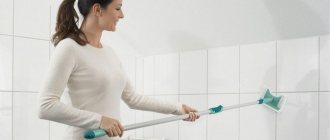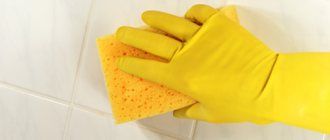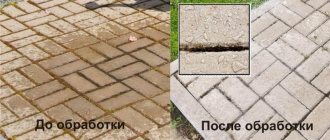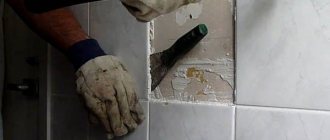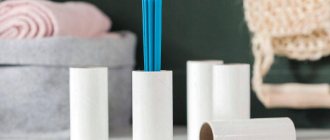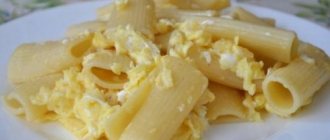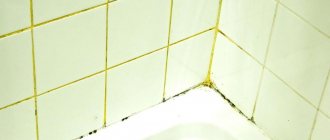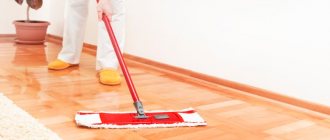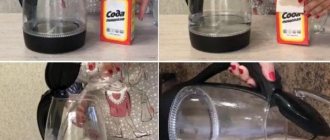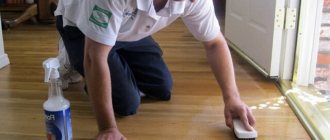How to make cleaning easier after renovation?
Cleaning up after renovation is not an easy task. Fine and nasty dust generated as a result of construction work will have to be raked out from everywhere in large quantities. It gets clogged up in upholstered furniture, settles on cabinets, and sometimes gets clogged up in the most inaccessible places.
Damage from construction dust
Minimizing harm from construction dust
That is why it is important to remove as much debris and dust as possible after completing the repair. And also, before starting this large-scale operation, it is recommended to make some preparations that will protect the interior from dust and whitewash.
It is advisable not to leave anything in the room where the work will be carried out - all the furniture is taken out, it is best to pack things in boxes or bags so that dust does not penetrate to them even through small cracks. It is recommended to wrap the furniture itself with plastic film, because even if it is standing in another room, it will be “attacked” by the smallest particles of building mixtures. It is recommended to wrap anything that cannot be taken out with cling film, as it will not allow dust to get to the interior item.
Preparing furniture for repair
If a procedure such as whitewashing a ceiling is being carried out, and there is already a new floor covering on the floor or it is not being replaced at all, since it will be used further, then the floors need to be protected as much as possible. To do this, the base is covered with a thick film, which is then fixed along the baseboards using masking tape.
Some people use regular old newspapers instead of film, but this method is not the most reliable. When wet, paper loses its strength and tears easily. To maximize the safety of the base, it is recommended to lay newspapers in at least two layers. It is not recommended to use a cloth to cover the surface, as it will still allow all the fine dust to pass through.
In this case, polyethylene film is used to protect furniture
It is worth remembering that it is easier to prevent contamination, and especially whitewash, than to later wash off all the consequences of your negligence. Sometimes some coatings become hopelessly damaged when exposed to white dust.
How to wash tiles from construction dust
During the repair process, the tiles become dirty with building materials of different structures and purposes. It is not always possible to protect the coating by first laying down plastic film or newspapers.
Hence the need to clean the tiles from construction dust, glue, grout, primer, plaster, sealant, foam, paint or lime.
Large hardware stores sell special floor cleaners, but homemade methods can be substituted. Let's consider effective methods in order.
how to get rid of limescale in the bathroom
Perhaps one of the harmless types of pollution is construction dust. No repair can be completed without it, so it makes sense to consider effective cleaning methods.
Before using home remedies, sweep the floor, remove large debris and dirt with a dry cloth.
If possible, vacuum the coating, try to remove glue, foam and other frozen materials with a blade. After preparation, proceed to wet cleaning by choosing one of the suggested products.
- Lemon acid. Dilute in 7 l. warm water 120 gr. citric acid, wait until the crystals dissolve. Dip a rag or mop into the solution and thoroughly wash the floor from one wall to the other (parallel lines). After wet cleaning, open the doors and windows and thoroughly ventilate the room. In addition to cleaning agents, citric acid will make the tiles shiny and hide possible cracks or scratches.
- Table vinegar. To prepare the solution, take 125 ml. table vinegar (concentration 9%), dilute in 5 liters. warm water, stir. Add 1 packet of citric acid and wait until the crystals dissolve. After this, wet the mop in the prepared solution and carry out wet cleaning. Next, wipe the floor covering with a clean, dry cloth, eliminating possible streaks.
- Powder "Automatic". Pour 8 liters into a bucket. hot water, add 150 gr. washing powder, stir the mixture with a wooden spatula until the crystals are completely dissolved. After this, soak a rag in the solution and wipe the floor in a circular motion. Once all the tiles have been removed, wipe the surface clean by washing the cloth in clean water. It is important to collect all the foam from the tiles so that no streaks form on them. If necessary, walk over the surface with a dry cloth.
how to remove silicone sealant from tiles
Ideal cleaning of a tile floor after renovation depends on correctly identifying the type of contamination.
We suggest you read: How to clean a plastic window sill from stubborn stains at home
Even if during the renovation all preventive measures were taken to prevent soiling of the tiles on the floor, cleaning the floor is inevitable. Among the most common types of pollution, we highlight the following:
- traces of glue;
- cement mortar;
- trace of grout;
- primer;
- putty, whitewash, plaster;
- paint (acrylic, oil, emulsion);
- polyurethane foam;
- sealant;
- resin, wax
Glue or minor traces of it can be washed off with a solution that includes water and vinegar or water and ammonia. The contaminated surface is generously moistened with the solution, and then cleaned with a brush or scraper, but it is best to remove any remaining adhesive from the tile with a damp foam sponge during repairs.
Cement, grout, and plaster can be washed with plain water if the stains are fresh. In the case of epoxy grout, a special epoxy solvent should be used. Often, toilet cleaners are used to remove cement stains.
As for grout, you will have to worry about this type of contamination, since it is removed simultaneously by two methods - chemical and mechanical. The chemical method involves the use of special acid-based products, and the mechanical method involves the use of a stationery knife or sandpaper.
Putty and construction dust can be easily removed using a solution based on ordinary laundry soap or some glass cleaner.
Silicone sealant or paint can be simply cleaned off the tiles or you can use an acetone solvent.
Resin or wax that is on the tile can be removed using a nitro solvent. Acetone or turpentine will also help in this case.
The primer is removed with special acetone-based solvents, and then the tiles must be thoroughly cleaned with a scraper or brush. You can also buy a special remover in stores, or use vinegar essence. The primer mixture is very sticky, and therefore it is better to remove it immediately, because you will have to work hard to remove it later.
The polyurethane foam is first carefully cut off with a knife, and the remains, after soaking them with water or acetone, are wiped with a sponge or stiff brush.
How to properly clean tiles after renovation
Ceramic tiles or just tiles in a modern interior are an irreplaceable material, because... practical, easy to clean and beautiful, gives the room a finished, neat look. The only thing that can be very upsetting is the contamination of the tiles after repairs.
Ceramic tiles can have a surface that is unpolished, semi-polished, polished, embossed and glazed.
Depending on the raw material, the surface may react to the chemical composition of the surface being treated, or may be indifferent to the action of aggressive agents. Clinker tiles are formed by extrusion or wet pressing, and then fired for a long time at high temperatures. Porcelain tiles are produced using the semi-dry pressing method and, just like clinker tiles, porcelain tiles are fired at high temperatures. These types of tiles are universally used and widely used; they are used to cover facades, lay them on the floor, on walls in houses and apartments, use them in landscape design, etc.
Related article: Preparing wallpaper glue correctly
You can thoroughly clean tiles after repair using either a homemade or purchased solution.
After repairs, unfortunately, the tiles can become dirty, and the dirt can be such that it cannot be washed off with ordinary soapy water. Sometimes a very pressing question arises: how to clean tiles after renovation?
Methods for cleaning tiles:
- The frozen adhesive solution is moistened with water in which vinegar or ammonia is dissolved, then mechanical forces are applied using any auxiliary equipment, for example, a spatula, scraper, screwdriver, etc., or solvent-based chemicals are used.
- The absorbed primer is washed off with special products that contain solvents, acetone, or you can use a fresh primer, then simply clean it off with auxiliary tools.
- If the tiles are contaminated with cement grout, lime or plaster, you can simply wash it off with water, but for epoxy grout you will have to buy a special epoxy solvent.
- Construction dust and putty can first be removed with a dry cloth or vacuum cleaner, and then it is suggested to wash it simply with water or soapy water, water with lemon, vinegar or glass cleaner.
- Silicone sealant or paint can be removed mechanically or using solvents based on acetone or white spirit.
Successful cleaning of tiles consists of correctly identifying the type of contamination, the surface layer of the tile itself and using the appropriate product, but the best way to clean all types of tiles is to protect them before repairs or timely removal of contamination.
How to remove whitewash from laminate flooring?
Whitewashing is one of the cheapest and most affordable options for finishing the ceiling, and it is also time-tested. Despite the fact that now this technology has been partially replaced by more modern design methods, it is still in demand, and all thanks to its special advantages:
- accessibility and low cost of the method;
- the ability to do the work with your own hands without the involvement of craftsmen;
- environmental friendliness and purity of the materials used;
- strength, reliability, stability of the applied decorative layer;
- a classic design option for a regular white ceiling.
Whitewashing can be done either with chalk or lime - these materials are available and always on sale, and are inexpensive.
Chalk mortar for whitewashing ceilings
Whitewash is precisely the material that most often leaves a white coating on the floor surface after repairs. It is sometimes very difficult to wash off, especially if it ends up in the wrong place, for example, on the floor. And during repairs, it is unlikely that it will be possible to completely avoid contamination of the base, even if you cover the entire room with film.
The fact is that the protective coating can be easily damaged and all the dirt will fall onto the floor through the resulting hole. It is unlikely that anyone will pay attention to a small hole in polyethylene and immediately repair it during the work process. That is why, when deciding to whitewash the ceiling, it is worth finding out how the process of washing the floors takes place.
Ceiling whitewashing process
To remove white deposits from the floor, you will have to be patient and purchase several products that make the job easier. You will also need plain water, a couple of rags, and a mop.
How to clean the floor from white deposits after renovation
Methods for removing white deposits and stains from the floor differ depending on the type of floor covering. Let's take a closer look at each option.
Laminate is a coating that, like parquet, really does not like water. Excessive moisture will negatively affect this type of coating, so you cannot use large quantities of water for washing. Although in general, this type of finishing material for finishing the floor is quite durable and reliable. But you still need to clean it carefully, otherwise you can damage the outer protective layer. And without it, the material will become susceptible to all types of mechanical and physical stress, as a result of which its service life will be dramatically reduced.
Cleaning laminate flooring should be done with great care
A vinegar solution of 1 - tbsp will help with whitewash stains on laminate flooring. l. dissolves in a 5 liter bucket of water. After this, a soft cloth (preferably microfiber) is moistened with the resulting solution and wrung out thoroughly - no liquid should flow from it. The floors are then treated with a damp cloth. The final stage is washing the laminate with plain water.
We suggest you read: How to clean white leather or canvas sneakers
Just like parquet, laminate can be treated with vegetable oil. It is diluted in warm water in a ratio of 1:100. After treating the laminate with this composition, it is wiped with vinegar diluted in water (2 tablespoons per 5-liter bucket).
Washing vacuum cleaner for laminate flooring
Another means for removing white plaque from laminate flooring is a solution of ordinary table salt. The main thing is not to dilute it in water in large quantities, otherwise stains may remain on the floor. The optimal consumption is 0.5 cups of salt per bucket of water. After treating with this composition, the floor is wiped with a clean hoe moistened with plain water.
To remove all dirt from the tiles on the floor, you need to take into account some nuances and features. Firstly, you need to choose the right detergents, secondly, you need to take into account the type of surface to be cleaned, and thirdly, washing and cleaning should be carried out in a timely manner, then no difficulties will arise.
The first thing to do is to remove dust from the tiles using a brush or vacuum cleaner. This must be done immediately, since the tiles very quickly absorb moisture, and with it all the dirt. This is preparing a new tiled floor for thorough wet cleaning.
With special trepidation, buyers use porcelain tiles for finishing floors, which are very resistant to both mechanical and chemical damage, but caring for them is not so easy. When cleaning such a coating, it is strictly forbidden to wash the surface using abrasive cleaners and brushes with abrasive surfaces.
How and with what to wash primer from porcelain tiles
If porcelain tiles are stained with a primer, and unpleasant whitish stains remain, then you can clean it with household chemicals that contain acid.
Cleaning preparations for bathrooms can be available.
If stains appear again after drying, then you need to apply a bathroom cleaner, cover with a wet cloth and let it soak for an hour, then thoroughly rub the stain with a stiff brush or washcloth, then rinse with clean water and quickly wipe the stain dry.
You can easily and quickly wash the primer from porcelain stoneware using available detergents.
The ingrained, dried primer is difficult to wipe off from porcelain stoneware; it is recommended that when repairs are carried out, the following precautions are taken:
- Cover porcelain tiles with plastic film or other protective material;
- Wipe off dirt as soon as it appears, do not allow it to soak in and dry out.
- If the tile surface is unpolished or semi-polished, special protection is required.
It is necessary to apply the preparation to the porcelain tiles, rub it over the surface with a hard sponge, and then rinse with clean water. Be careful with your ceramic tiles, and then you won’t have to wash them with all sorts of chemicals.
Related article: Glass wallpaper: main brands
Washing floors after renovation: general recommendations
In general, cleaning the floor after finishing renovation work is not much different from regular cleaning. But it is often necessary to use special solutions or components to deal with white spots on the base. Before we talk about floor cleaning products, we will share a few useful tips for cleaning the base:
- You cannot use soda to wash linoleum - its effect will have a bad effect on the appearance of the coating;
- It is best to remove paint and other similar liquids from the coating immediately - then it will be more difficult to wash them. The same applies to whitewash stains;
- laminate and other similar coatings should not be rubbed with abrasive materials - the top protective layer can be damaged;
White plaque on laminate
- You cannot treat varnished surfaces with potassium permanganate - stains will appear on the floor;
- It is best to wash all stains after the initial treatment of the floor - sweeping and wet cleaning;
- It is better to start washing the floors from the wall farthest from the door, moving towards the exit, so as not to trample on the just washed surface;
- It is recommended to change the water as often as possible when washing floors after repairs - this way you can quickly deal with corrosive stains and avoid stains, which especially often appear during whitewashing.
Try to change the water as often as possible
How to remove glue from tiles
Unlike construction dust, the adhesive solution is more resistant to various cleaning agents, so the approach must be thorough.
- Water. If glue gets on the tiles during processing, remove it with a damp cloth and a rubber spatula. At the same time, alternate tools (rag-spatula).
- Ammonia. In the case of fresh hardened glue, it is important to soften the composition in time. To do this, pour 1 liter into a bucket. water, add 35 ml. ammonia (ammonia) or 100 ml. table vinegar (concentration 9%). Soak a gauze cloth folded in several layers in the resulting mixture. It is important that it is very wet. After this, apply gauze to the glue stain and leave for 10 minutes. Scrape off the residue with a rubber-tipped spatula, being careful not to damage the tile.
- Acetone. If you were unable to prevent the adhesive from getting on the tile, causing it to harden, proceed as follows. Take an old cotton towel and soak it in nail polish remover, nail polish thinner, or acetone. Place it on the glue trail and wait half an hour. Periodically wet the cloth in the solution. After all manipulations, scrape off the remaining material with a spatula or blade.
How to remove old paint from ceramic tiles
3 way
Tiles require special care - after all, stains on tiled or porcelain stoneware coatings after repairs do not decorate them at all. So let's start fighting them.
It is clear that each type of pollution requires its own remedy. We suggest moving from simple to complex, i.e. we will analyze the different types of stains on tiles and how to eliminate them.
Removing inscriptions and graffiti from the facades of residential buildings. A joint project of LLC Management Company "Holmservice" Krasnoyarsk and...
It is not difficult to clean tiles from construction dust after renovation. To do this, you will need a soft cloth and warm water. The tiled surface will have to be washed several times, so get ready for this right away. And do it this way: wash the tiles with a rag and plain water, wait until it is completely dry.
What is the price for removing old paint from walls? Repeat the process until you get the desired result. Usually, for absolute cleanliness, changing the water 2-3 times is enough.
When contaminated with construction dust, it doesn’t really matter what material you wash – ceramic tiles on the wall in the bathroom or kitchen, or porcelain tiles on the floor. In any case, water is the best helper.
Important! To speed up the process and get excellent results, use a liquid cleaner that you add to the water. The most famous of this line of household chemicals is Mister Proper.
If dust gets stuck in the seams between the tiles, use a toothbrush. With its help, you can efficiently clean hard-to-reach areas.
Washing the paint
With paint the situation is more complicated. The easiest way to deal with fresh marks: if you accidentally get paint, you should quickly wipe it off with a soft cloth, and that’s it. If you hesitate, it won’t be so easy to wipe off dried paint from tiles or porcelain tiles.
- Stains from water-soluble paint should be thoroughly moistened and then washed off.
- Fresh traces of oil paint can be removed with vegetable oil.
- Old paint stains can be removed from tiles using a solvent.
To clean floor tiles from stains, first try removing them mechanically - with a blade, felt or sandpaper, and then wash them with plain water with the addition of dish gel.
If, after laying the tiles, there are still strips of silicone adhesive on it, carefully cut off the remains with a sharp blade or knife. Small remaining traces are easily dissolved with the help of white spirit, gasoline or kerosene.
Important! When working with flammable liquids, be careful! Wear a mask and gloves when working, do not smoke under any circumstances, and do not light the gas stove!
We suggest you familiarize yourself with How to paint the sole of sneakers black
After repairs, traces of grouting leave streaks on the tiles. They will disappear if you wash the tiles with water and dish soap. The primer is removed using vinegar essence, as well as soapy water.
If you are unable to get rid of the stain on the tiles after repair, “soak” it overnight. Cover the stain with a damp cloth, then with cellophane. Overnight the stain will soften and wash off easily.
Various chlorine products help to thoroughly clean tile surfaces from dirt. To do this, apply a bleach solution from a spray bottle onto a damp tile, wait a few minutes and rinse with water.
A well-known household stain remover, ammonia, can also be used to clean tiles and porcelain tiles. To do this, dissolve 2 tablespoons of ammonia in a liter of water and begin cleaning. Particularly noticeable stains will need to be rubbed thoroughly.
The final cleaning of the tiles after repair is carried out after removing all kinds of stains. We invite you to get acquainted with the methods used by the older generation. The peculiarity of our grandmothers’ products is their budgetary availability and the complete absence of aggressive chemicals.
How to clean grout from tiles
Grout is used to seal the seams that are formed during the laying of tiles. Ultimately, the tile looks holistic and beautiful. In addition, the mastic for this type of work is quite easily washed off from the surface. This cleaning option is ideal for removing soft cycle mixtures. Let's look at the procedure in more detail.
We invite you to read: From hygiene to esotericism, is it possible to eat from shared utensils?
After you have caulked the seams, wait for the grout to dry (but not completely harden). The top layer will turn whitish, this will be a signal that cleaning has begun. Soak the cloth in water, walk over the entire surface of the tile, washing off the grout like whitewash.
To remove epoxy grout from a tile surface, purchase a solvent designed specifically for such purposes at a hardware store. Without it, it is unlikely that you will be able to clean the tiles.
How to clean parquet after renovation?
Parquet is a reliable coating, but it is very delicate. It does not like to come into contact with water - due to its exposure, the coating loses its beautiful and noble appearance and may swell. That is why it is not recommended to wet it abundantly. Let's look at the easiest way to remove whitewash and white deposits from parquet.
Using parquet cleaner
Table. Means for combating whitewash on parquet.
| Means | a brief description of |
| Dish detergent | After dissolving a little of this product in water, the parquet is carefully treated with a rag soaked in the solution. The composition easily copes with water-soluble types of stains - putty, construction dirt, including whitewash. |
| Vegetable oil and vinegar | Before using these products, it is recommended to wipe the parquet with a clean damp cloth. After this oil is dissolved in cool water in a ratio of 1:100. The parquet is washed with the resulting composition - the whitewash will be removed very easily. After this, the floors are wiped with a weak vinegar solution. |
| Kerosene | Suitable for severe dirt. Dissolves in a bucket of water (5 l) in an amount of 100-150 g. The resulting solution is used to treat contaminated floors. The method removes stains well. It is important to ventilate the room well after finishing work, and wipe the floors with a weak vinegar solution - it will help cope with the smell of kerosene. |
Parquet should not be rubbed with coarse abrasive materials. Neither metal brushes nor rough scrapers are suitable for processing it. They will simply ruin the coating by scratching the protective top layer.
How to remove old paint from ceramic tiles
During the finishing work, paint can end up anywhere, and even the protective measures taken are not able to completely protect against its splashes. Often the paint gets on the tiles. If you immediately notice this problem, then cleaning the tiles will not be difficult, but what if the paint has dried and adheres firmly to the surface?
There are many methods for removing paint from various surfaces, and the choice of one or another depends on the type of paint, the degree of contamination and the characteristics of the material with which it is in contact.
In the case of tiles, the last factor plays a particularly important role - tiles with cracks or with a textured surface are especially difficult to get rid of dirt.
But nothing is impossible, and we have prepared for you three methods of removing paint, which can be used both individually and, in particularly difficult cases, in combination.
1 way
If the paint appears on the tiles in patches or spatters, you may want to try scraping it off first. A safety razor or utility knife blade may be suitable for this.
For maximum efficiency, the angle between the tool and the surface should be approximately 45 degrees. The blades must be used carefully so as not to injure yourself or damage the top layer of the tile.
It is better to start in a place that is not too visible - if you see that a layer of glaze is being removed along with the paint or scratches appear on the surface, then you should stop cleaning and try other methods. But, in most cases, it is possible to achieve good results with a blade, and by wiping the tiles with a damp cloth at the end of the work, you can verify the effectiveness of this method.
Method 2
Old, dried paint that cannot be scraped off can be removed using heat. A hair dryer is usually used as a cleaning tool.
Before you start heating, ensure the room is ventilated, as many paints, when exposed to temperature, begin to smell strongly and even emit substances that are dangerous to the human body.
When using this method, it is best to divide the contaminated surface into small areas, 30x30 centimeters in size or slightly larger. You need to heat the paint gradually, continuously moving the nozzle of the hair dryer. To begin with, set the air heating temperature to the middle position and then, if necessary, increase it.
When the paint gets hot enough to become sticky and soft, you need to take a plastic scraper and start removing it.
As with the blade, the tool should be held at a 45-degree angle to the surface of the tile. You need to use a scraper starting from the edges of the tile and moving towards its center.
As you work, you will notice that the paint will begin to harden and in this case you will have to pick up a hairdryer again.
3 way
If the first two cleaning methods do not help, you will have to resort to the most radical, chemical action. Removing paint using various solvents is most effective and works especially well with tiles that have a textured, uneven surface.
This method will also help clean old tiles covered with small defects and cracks. It must be remembered that although such cleaning is the most effective, it can also be considered the most risky.
It would also be a good idea to test the chemical on leftover tiles or in an inconspicuous place, such as a corner or behind furniture. Don’t forget about safety precautions - add rubber gloves to your goggles and respirator to protect your hand skin from burns.
If you doubt the chemical resistance of a glazed surface, start with the least aggressive solvents.
We suggest you familiarize yourself with what temperature should be in the refrigerator
In some cases, you can get by with regular table vinegar diluted 50 to 50 with water.
For greater effectiveness, you can try soaking the stained surface with liquid and leaving it for a few minutes. To remove softened paint, use the familiar plastic spatula.
Useful tips 09.20.2019 12:51:11
Only registered users can leave reviews. Please register
Ceramic tiles are present in every apartment today. It is used in rooms where there is often high humidity, temperature changes, and splashes of dirt and grease. The tile takes a powerful blow, but even such a resistant material can become covered with plaque, which is not always easy to remove.
Specialists whose main specialty is office cleaning helped us select the most effective ways to clean ceramic tiles.
The company employs real professionals who know well how to clean this or that type of surface, even from the most difficult contaminants, and do it in the shortest possible time so as not to disrupt the work process in the office.
The industry has long developed a lot of special compounds that help wash away plaque, greasy stains, various types of dirt and even traces of mold from tiles. Under the trademarks “Silit”, “Santik”, “Domestos”, “Komet”, “Sif”, “Mr. Muscle” and others, products are produced that in a matter of minutes allow you to return the tiles to their original appearance.
Before purchasing, it is important to read very carefully the instructions for use and the type of tile that can be cleaned with such products.
It is better to take cream or gel-like compositions - products with abrasive particles can leave a lot of small scratches on the tile, in which dirt will accumulate in the future.
It is also worth considering the chemical resistance class of the tile: tiles of class A and AA are the most resistant to various types of aggressive agents and will easily survive almost any impact, which cannot be said about tiles with resistance rating C.
It is advisable to take a product that does not contain chalk. If the seams between the tiles are treated with epoxy grout, then acid-containing products are also prohibited. If a whitish coating appears on the tiles, it is better to use a product containing chlorine. The processing method will be indicated in detail on the packaging - it must be followed carefully.
Light stains can be washed off with regular dishwashing detergent. It is enough to dissolve a small amount of it in warm water until foam forms. The resulting solution is applied with a sponge to the contaminated tiles, left for 10-20 minutes, and then thoroughly washed off with plain water.
Instead of detergent, you can use regular soap (laundry soap is not recommended). To make the dissolution process faster, you can rub the bar soap into warm water. Next, the washing process is similar to that when using dishwashing detergent.
If a special means for washing tiles is not always at hand, then every housewife probably has a composition for washing glass and mirrors in her arsenal.
Almost every such product contains ammonia, which will help remove minor dirt from the tiles and restore it to its former shine.
The cleaning method is no different from washing windows: you need to spray the composition, and then carefully treat the surface with a soft cloth.
Modern detergents are, of course, effective, but they also have disadvantages. Firstly, household chemicals can cause allergies.
Secondly, it requires very careful handling, since sometimes the concentrations of aggressive chemicals in them can damage the skin of the hands and even the respiratory tract. Thirdly, some products cannot be completely washed off even with a large amount of water.
Therefore, it is not surprising that today many people abandon store-bought products and switch to using folk remedies.
The most popular and easiest way to clean ceramic tiles from grease, lime deposits and plaque is to use lemon juice. Problem areas should be thoroughly rubbed with lemon and left for a few minutes.
Lemon juice can be squeezed out, diluted a little with water and sprayed with a spray bottle. After a few minutes, the juice is washed off with water.
The bonus of this method is that the room will be filled with a pleasant and, most importantly, natural aroma.
An alternative is citric acid powder. The bag is dissolved in a glass of warm water and the resulting liquid is used for processing.
No. 5. SODA AND VINEGAR
The reaction of baking soda and vinegar allows you to soften deposits of dirt and plaque. To clean ceramic tiles, you need to apply a paste of soda slightly moistened with water to the problem areas. Then they spray a solution of table vinegar; it is most convenient to do this with a spray bottle. Let the components react for 3-5 minutes, then the slurry must be washed off.
No. 6. SODA
Soda itself can also have a good effect on fatty stains. In general, this substance is considered a universal cleaning agent; it can also be used to remove, for example, coffee and tea stains that have become ingrained in dishes.
The washing method is the simplest: wet a sponge, dip it in soda powder and begin to carefully work the surface of the tile, dipping the sponge in soda powder again and again as necessary. Plaque and dirt should be cleaned thoroughly, but you should not press too hard to avoid scratching the tile.
How to clean tiles from primer
As a rule, wall cladding is carried out after laying the tiles. For this reason, you can often find white spots on tiles, which are quite difficult to clean after hardening.
- Water. If the primer just gets on the tile, wash it with warm (almost hot) water. To improve the effect, add 50 g. granulated sugar, wait until the crystals dissolve. Dip a sponge into the solution and wipe off the dirt.
- Solvent. An effective cleaning method is considered to be an industrial solvent, both automotive and construction. It is enough to moisten a cosmetic swab or a clean rag in the composition, and then wipe off the trace of the primer.
- Alkali. Buy a product that contains alkali. Dampen a napkin or rag and wipe the tiles several times. Finish cleaning by wiping the tiles with vinegar.
how to clean the grout between tiles in the bathroom
Universal cleaning methods
- "White Spirit". Remove traces of polyurethane foam, paint, primer and other building materials with a cloth soaked in white spirit. After treatment, wipe the tiles with a dry cloth.
- Window cleaner. The most effective and affordable way to clean tiles from various types of contaminants. Buy a bottle with a spray bottle, spray the composition onto the tiles, wipe dry first with a cotton cloth, then with a microfiber cloth. Carry out the procedure in stages, treat 1-2 square meters at a time. m. tiles at a time.
- "Cinderella". Purchase liquid cleaning composition from a hardware store and use it according to the instructions. After the procedure, wet the tiles with water, wipe with a sponge and polish with a soft cloth.
- Sandpaper. Try scraping off large chunks of primer, foam, glue, etc. with car polishing sandpaper. Choose the degree of abrasiveness from 1000 to 2000. After the procedure, polish the coating with a velvet cloth.
It is not difficult to clean tiles from building materials if you have sufficient knowledge regarding the procedure. Use acetone, vinegar, citric acid or solvent. Remove large parts with a scraper or sandpaper.
Tiles on the floor: how to clean them after renovation
Ceramic tiles, a very durable type of finish that is resistant to aggressive chemical solutions, nevertheless require careful handling. Even if, when laying ceramic tiles, all visible dirt was wiped off, nevertheless, the floor tiles must, first of all, be cleaned of dust particles and visible dirt that have settled on them, then washed with a soapy solution, and to add shine, when washed with clean water, add vinegar, citric acid or ammonia to it.
Related article: How to weld seams correctly: vertical, horizontal, ceiling
To clean floor tiles, you can use several products, including bathroom cleaner, hydrochloric acid, or glass cleaner.
Ceramic tiles can be cleaned using the following available products:
- Liquids for cleaning bathrooms, smearing the stains in several layers;
- Apply table salt to the stain and moisten with water;
- Hydrochloric acid 5%;
- Spray glass cleaning liquid onto stains;
- Apply tooth powder to the stain, wet it and scrub with a stiff brush.
If the contamination is significant, then you must use a cleaning agent after reading the instructions for use. But, if you’ve tried everything, but you can’t wash the tiles, then you’ll have to buy a special product for a specific type of stain, and wash off the remaining residue with the purchased anti-stain product.
